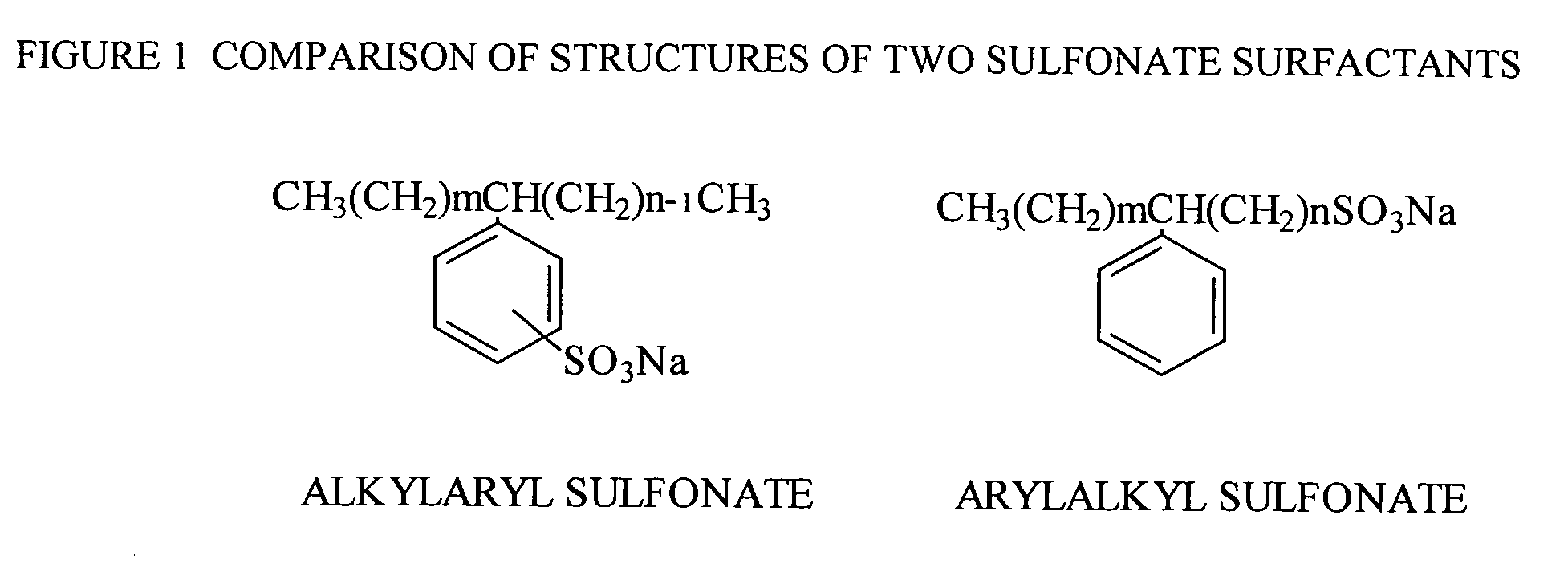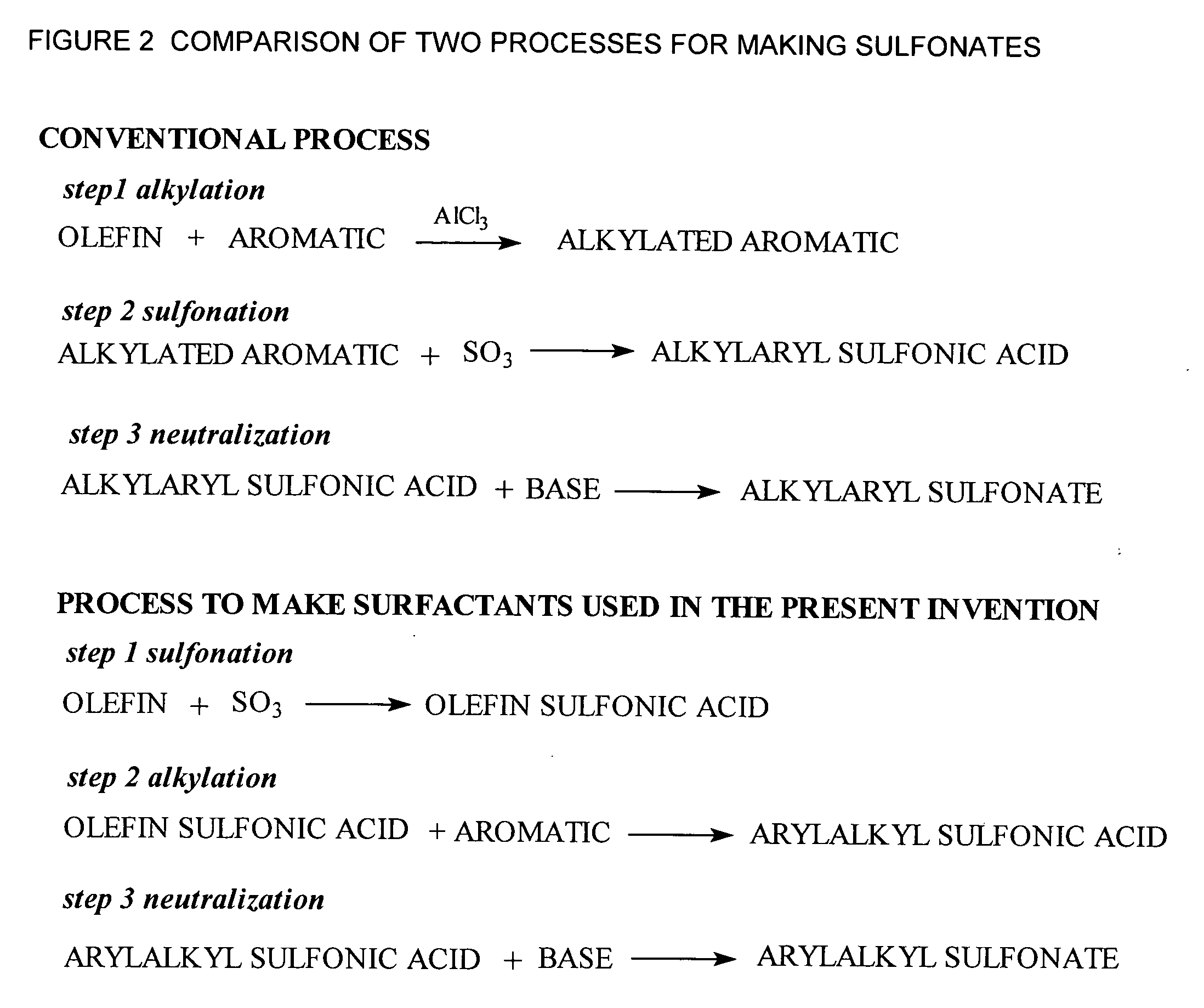Oil recovery composition and method using arylalkyl sulfonate surfactants derived from broad distribution aplha-olefins
a technology of arylalkyl sulfonate and surfactants, which is applied in the direction of fluid removal, chemistry apparatus and processes, and wellbore/well accessories, etc., can solve the problems of unfeasible economic justification of eor project, and high cost of alkyl sulfonate surfactants
- Summary
- Abstract
- Description
- Claims
- Application Information
AI Technical Summary
Benefits of technology
Problems solved by technology
Method used
Image
Examples
example 1
[0020] A simulated injection fluid was prepared using either 0.5% of the XSA-1230 or the XSA-1224, 0.25% ethylene glycol monobutyl ether, 3.0% NaCl and the remainder water. The IFT of the simulated injection fluid against a waxy crude oil having an API gravity of 18 and also against a light crude oil with API gravity of 30 was determined at 60° C. using the University of Texas Model 500 Spinning Drop Tensiometer.
[0021] It is widely known throughout the industry that an IFT value of equal or less than 10−2 mN / m is necessary to overcome capillary forces trapping oil in microscopic pores within a subterranean reservoir and to recover additional oil by EOR methods as discussed by Morgan et al. in Improved Oil Recovery by Surfactant and Polymer Flooding, p. 102 and Pope in Basic Concepts in Enhanced Oil Recovery, p. 89-90. The results shown in distribution alpha-olefins are very effective in lowering the IFT to the desired ranges with different oils for EOR.
TABLE 2Interfacial Tension ...
example 2
[0022] Example 2 compares the solubility of the XSA-1224 and OSA-1224 in various concentrations of salt. The test was run at 60° C. using 0.5% by weight of the surfactant. Table 3 illustrates the solubilities of the surfactants over a wide range of salt concentrations.
TABLE 3Surfactant Solubilities in Various Concentrations of SaltNaCl, % by wtOSA-1224XSA-12240.5ClearClear1.0ClearClear2.0ClearClear3.0HazeClear5.0PrecipitateClear10.0PrecipitateHaze
[0023] Surprisingly, the board distribution arylalkyl sulfonate surfactants discussed in the present invention illustrates their unexpected benefits by extending their solubility ranges in various concentrations of salt solution over the range obtained using broad distribution alkylaryl sulfonate surfactants made by conventional process. As known to the ordinary skilled artisan, the electrolyte tolerance of a surfactant is very important in EOR since the injection fluid is subject to changes in salinity upon contact with connate water in ...
PUM
 Login to View More
Login to View More Abstract
Description
Claims
Application Information
 Login to View More
Login to View More - R&D
- Intellectual Property
- Life Sciences
- Materials
- Tech Scout
- Unparalleled Data Quality
- Higher Quality Content
- 60% Fewer Hallucinations
Browse by: Latest US Patents, China's latest patents, Technical Efficacy Thesaurus, Application Domain, Technology Topic, Popular Technical Reports.
© 2025 PatSnap. All rights reserved.Legal|Privacy policy|Modern Slavery Act Transparency Statement|Sitemap|About US| Contact US: help@patsnap.com


